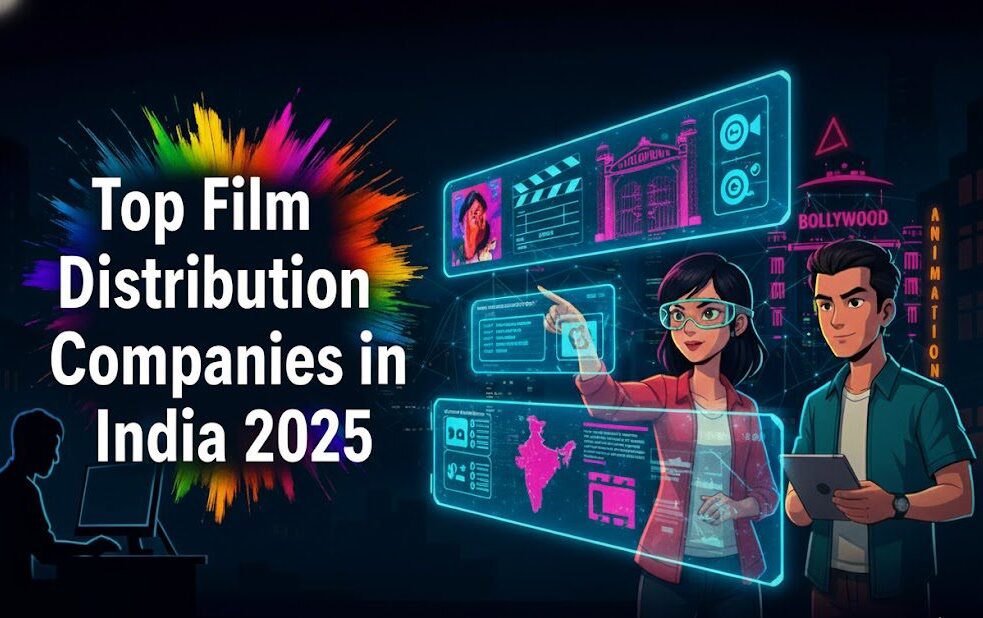Introduction
Regional Film Production Partnerships are at the heart of today’s global entertainment industry. They allow filmmakers to collaborate across borders, share resources, and create content that resonates with diverse audiences. These partnerships foster cultural exchange, amplify creative diversity, and drive economic growth in the regions involved.
This article explores the benefits, challenges, and future trends in regional film production partnerships, with practical examples and insights on how Vitrina.ai empowers entertainment professionals. Whether you’re a filmmaker or studio executive, this guide provides actionable strategies to navigate the evolving landscape of regional collaborations.
Table of content
- Introduction
- Benefits of Regional Film Production Partnerships
- Challenges in Regional Film Production Partnerships
- Role of Governments and Emerging Markets
- Role of Technology and Platforms in Film Partnerships
- Case Studies and Practical Examples
- Vitrina.ai’s Role in Regional Film Production Partnerships
- Future Trends and Opportunities
- Conclusion
- FAQs
Expand Your Reach Today!

1. Film Production Partnerships
What Are Regional Film Production Partnerships?
These partnerships involve collaboration between filmmakers, production companies, and stakeholders from different regions to produce films. They often leverage co-production treaties, tax incentives, and government subsidies to maximize benefits.
Why Are They Important?
- Global Reach: Partnerships expand a film’s audience by combining creative and financial resources.
- Economic Impact: They boost local economies by creating jobs and attracting investments.
Role of Local Film Commissions
Film commissions, such as the California Regional Film Office Partnership, play a pivotal role by offering services like location scouting, permitting, and logistical support. Their efforts streamline production, making regions more attractive to filmmakers.
2. Benefits of Regional Film Production Partnerships
Economic Advantages
- Tax Incentives: Countries like Canada and Saudi Arabia offer lucrative rebates of up to 40% to attract international filmmakers.
- Subsidies: Co-production treaties allow access to funding from multiple nations.
Cultural Exchange
Partnerships promote authentic storytelling by incorporating diverse cultural elements, enriching the narrative appeal of films.
Resource Optimization
- Shared expertise in areas like VFX, localization, and equipment reduces production costs.
- Example: Australian-UK collaborations have successfully leveraged shared resources for high-impact films.
3. Challenges in Regional Film Production Partnerships
Legal and Logistical Barriers
- Complex Agreements: Co-production treaties often come with stringent regulations and intellectual property considerations.
- Logistics: Cross-border operations require meticulous planning to manage equipment, talent, and schedules.
Language and Cultural Sensitivity
- Language barriers can hinder effective communication.
- Cultural misalignments may result in content that fails to connect with target audiences.
Solutions
- Employ AI-driven tools for real-time translation and localization.
- Use platforms like Vitrina.ai to connect with experienced collaborators who understand local regulations.
Boost Your Film’s Success!

4. Role of Governments and Emerging Markets
Government Incentives
- Saudi Arabia and New Zealand are leading examples of countries offering tax rebates and dedicated infrastructure to attract filmmakers.
- These incentives often include streamlined processes for permits and customs.
Emerging Markets
- Africa: Investments in pan-African networks and digital platforms are positioning the continent as a filmmaking hub.
- Latin America: Known for cost-effective production setups and unique narratives, it is an increasingly popular destination for co-productions.
5. Role of Technology and Platforms in Film Partnerships
Digital Collaboration Tools
Platforms like Vitrina.ai enable real-time communication and seamless collaboration between global teams.
AI in Regional Film Production
- Streamlined Workflows: AI tools automate tasks like subtitling, dubbing, and editing.
- Predictive Analytics: Helps filmmakers identify market trends and potential collaborators.
6. Case Studies and Practical Examples
Successful Partnerships
- Netflix and Africa: Netflix’s collaborations with African creators have resulted in a series of successful original productions, boosting the region’s visibility.
- Australia-China Co-Productions: These projects blend cultural elements to appeal to audiences in both regions.
Best Practices
- Partner with local film commissions for resources and guidance.
- Leverage tools like Vitrina.ai to identify trustworthy partners and vendors.
7. Vitrina.ai’s Role in Regional Film Production Partnerships
Connecting Stakeholders
Vitrina.ai bridges the gap between filmmakers, studios, and service providers through its verified network. Its matchmaking capabilities allow users to:
- Find partners based on specialization and project needs.
- Access a global directory of distributors, production houses, and localization vendors.
Providing Market Insights
- Real-Time Data: Track trends in specific regions and genres.
- Competitive Benchmarking: Analyze competitors’ projects and strategies.
Success Stories
A streaming platform used Vitrina.ai to collaborate with post-production vendors in emerging markets, optimizing its localization process.
8. Future Trends and Opportunities
Key Trends for 2025
- Sustainability in Filmmaking: Eco-friendly production practices are becoming a priority.
- Immersive Technologies: AR and VR are enhancing collaborative storytelling, particularly in co-productions.
Economic Impact
Emerging markets like Africa and Southeast Asia are poised to contribute significantly to global box office revenues through regional partnerships.
Conclusion
Regional film production partnerships are driving the future of global storytelling. By fostering collaboration, cultural exchange, and economic growth, these partnerships are reshaping the entertainment landscape. Tools like Vitrina.ai make it easier for filmmakers to navigate this complex ecosystem, ensuring their projects succeed on a global scale.
Frequently Asked Questions
A collaboration between filmmakers and stakeholders from different regions to produce films.
Through co-production treaties, government subsidies, and private investments.
Legal complexities, logistical hurdles, and language barriers.
By offering data-driven matchmaking, verified networks, and trend analysis.


































